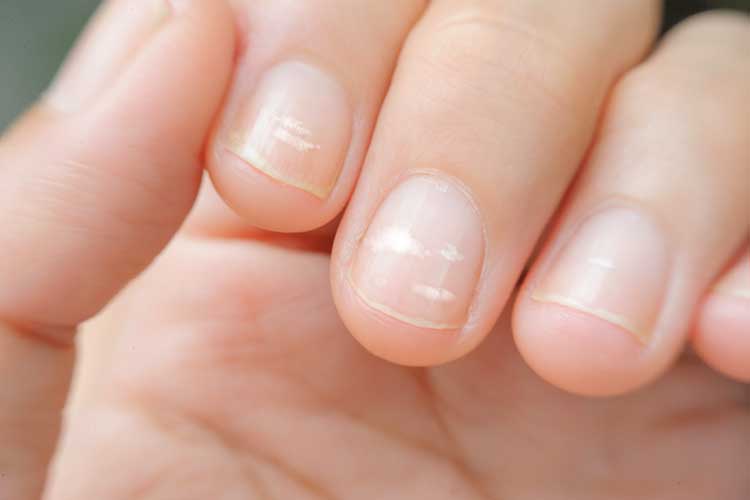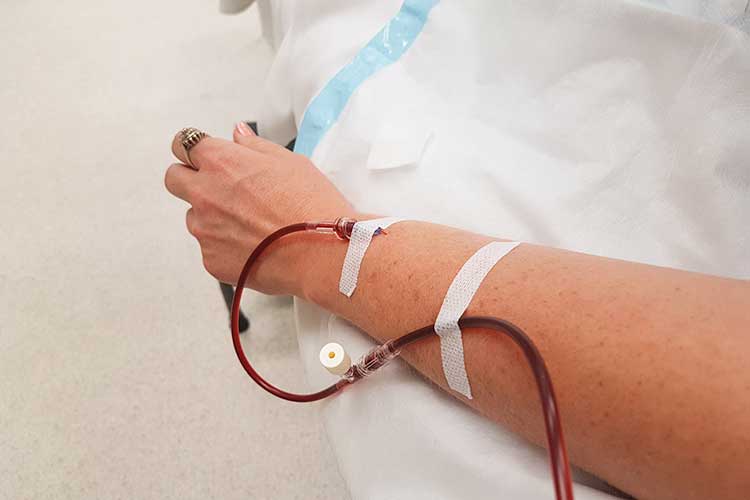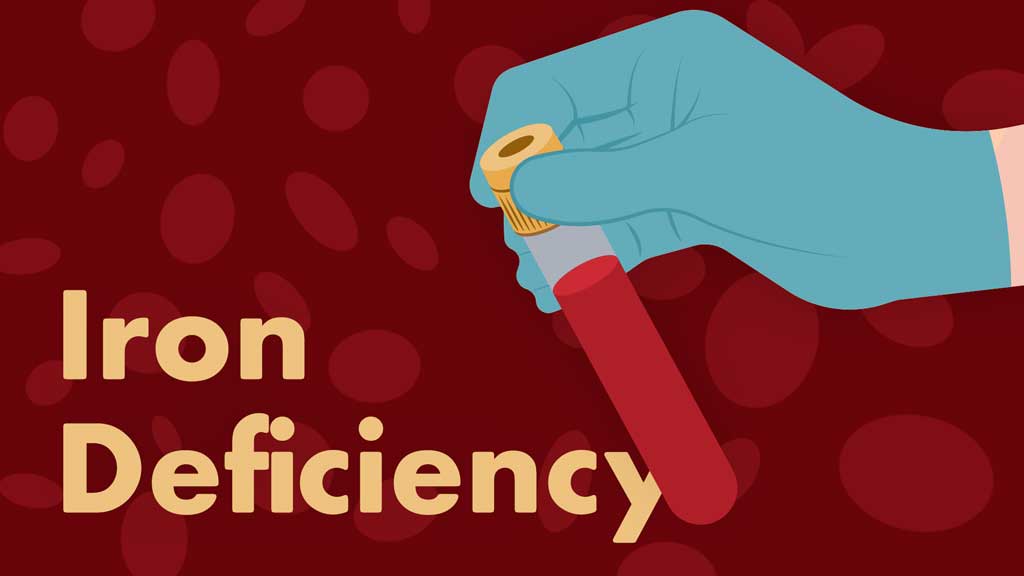Iron deficiency is the most common mineral deficiency (Balendran & Forsyth 2021), particularly in women, with one in four females estimated to have inadequate intake (ABS 2015).
What are the implications of iron deficiency, and why is it so prevalent?
What is Iron Deficiency?
Iron deficiency occurs when there is inadequate iron in the body. Iron is involved in several important bodily functions, including:
- The production of haemoglobin, a protein in red blood cells that helps to transport oxygen from the lungs around the body
- The production of myoglobin, a protein that helps to store oxygen in the muscle cells
- The production of certain enzymes, which drive several cellular processes and are involved in the production of energy
- Proper functioning of the immune system.
(Better Health Channel 2022)
The role of iron in oxygen transport means that sufficient iron levels are essential to ensure the body can provide enough energy for daily life (Better Health Channel 2022).
Stages of Iron Deficiency
There are three levels of iron deficiency, depending on how low the body’s iron stores are:
- Iron depletion: Where the body has normal haemoglobin levels but only a small amount of stored iron, which will run out soon. Often, there are no obvious symptoms.
- Iron deficiency: Where there are low levels of stored and bloodborne iron, and haemoglobin levels are below normal. The person might experience mild symptoms such as tiredness.
- Iron deficiency anaemia: Where haemoglobin levels are too low for the blood to transport oxygen to the cells effectively. Symptoms may include a pale appearance, breathlessness, dizziness, fatigue and impaired immune function.
(Better Health Channel 2022)
Causes of Iron Deficiency
The body is unable to produce iron on its own and instead relies on the consumption of iron-rich foods. If iron intake is insufficient or excessive iron is lost, this can result in deficiency (Healthdirect 2023a).
The main causes of iron deficiency are:
- Not eating enough foods that are rich in iron
- Difficulty absorbing iron through the stomach and bowel, which can be caused by abdominal surgery or illnesses such as coeliac disease
- Excessive blood loss due to factors such as:
- Heavy menstrual bleeding
- Gastrointestinal bleeding caused by medicines such as aspirin or anti-inflammatories
- Gastrointestinal bleeding caused by ulcers, bowel polyps or cancer
- Donating blood too often
- Surgery
- Gut conditions such as inflammatory bowel disease
- Parasitic infections (e.g. hookworm).
(Healthdirect 2023a)
Who’s At Risk of Iron Deficiency?
- Babies who are given cow milk or other milk instead of breastmilk or infant formula
- Toddlers, particularly those who consume too much cow milk
- Teenage girls
- Menstruating people, especially those who experience heavy menstrual bleeding
- People with an intrauterine device (IUD) in situ (as they usually have heavier menstrual cycles)
- Pregnant or breastfeeding people (as they require more iron)
- People with poor diets (e.g. excessive alcohol intake, fad diets)
- People with eating disorders
- Vegetarians and vegans
- Aboriginal and Torres Strait Islander people
- Athletes who are in training, as exercise increases the need for iron and iron is lost through sweating
- People with intestinal worms
- Regular blood donors
- People with conditions that cause a predisposition to bleeding e.g. gum disease, stomach ulcers, polyps or bowel cancer
- People with chronic conditions such as cancer, autoimmune diseases, heart failure or renal disease
- People who are regularly taking aspirin
- People with an impaired ability to absorb iron (e.g. those with coeliac disease).
(Better Health Channel 2022)
Symptoms of Iron Deficiency

Depending on the extent of the deficiency, people might experience symptoms like:
- Tiredness, listlessness and weakness
- Breathlessness
- Impaired memory and concentration
- Impaired performance at school or work
- Reduced immune function, leading to an increased risk of infection
- Difficulty performing aerobic exercise
- Fatigue
- Behavioural issues (in children)
- Reduced libido
- Impaired motor and cognitive function in infants
- Rapid or irregular heartbeat
- Headaches
- Cold hands and feet
- Painful or inflamed tongue
- Brittle nails
- Pale skin.
(Healthdirect 2023a; The Pines Medical Practice 2019)
Iron deficiency may also lead to pregnancy-related complications such as premature delivery or delivery of a low birth weight baby (Healthdirect 2023a).
Diagnosing Iron Deficiency
Iron deficiency is typically diagnosed via physical examination, blood tests and the patient’s medical history (Better Health Channel 2022).
Treating Iron Deficiency
Treatment of iron deficiency will depend on the results of any investigations. There may be an underlying condition that needs to be addressed first (Healthdirect 2023a).
The patient will need to replenish their iron stores. Depending on the severity of the deficiency, this may be achieved through a variety of strategies, including:
- Increasing intake of iron-rich foods
- Increasing intake of vitamin C, which assists in the absorption of iron
- Avoiding foods and drinks that impair iron absorption
- Taking iron tablets or supplements
- Undergoing an iron infusion
- Undergoing a blood transfusion (in severe cases).
(Healthdirect 2023a)
Note that iron supplements may cause side effects such as dark or black stools, nausea, vomiting, constipation and diarrhoea (Better Health Channel 2022).
Iron deficiency should never be self-diagnosed, despite iron supplements being available without a prescription. Having excess iron in the body can be harmful or even fatal, so seeking medical advice prior to the use of supplements is essential (Better Health Channel 2022).
Iron Infusion

Iron infusion is the intravenous administration of an iron and saline solution to increase iron levels in someone who is experiencing iron deficiency. Infusion is usually considered if oral iron supplements were tried and were not tolerated or ineffective (St Vincent’s Private Hospitals 2022).
An iron infusion may cause side effects such as:
- Metallic taste in the mouth
- Headaches
- Nausea
- Muscle and joint pain
- Dizziness
- Rashes
- Changes to blood pressure or pulse
- Skin staining at the injection site (rarely)
- Anaphylaxis (rarely).
(St Vincent’s Private Hospitals 2022; The Women’s 2022)
In cases where oral iron supplements are proving ineffective, the benefits of iron infusion generally outweigh the risks (Central Coast Local Health District 2017).
Increasing Iron Intake
It’s important to consume an adequate amount of iron. The amount of iron absorbed by the body depends on how much iron is already being stored. Generally, a healthy body will absorb 18% of the available iron from a typical Western diet that includes animal products and 10% of the available iron from a vegetarian diet (Better Health Channel 2022).
There are two types of iron that are contained in foods:
- Haem iron: found in animal tissue, especially offal. It’s easily absorbed by the body.
- Non-haem iron: found in animal tissue, animal products, nuts, dried fruits, wholemeal pasta and bread, iron-fortified bread and breakfast cereal, legumes, dark leafy vegetables, oats, and tofu. It’s absorbed less effectively but can still provide an adequate amount of iron if enough is consumed. Plant sources of iron are absorbed more effectively when cooked.
(Better Health Channel 2022; Healthdirect 2023b)
Vitamin C intake can also boost iron absorption (Better Health Channel 2022).
It’s also important to be aware of factors that may reduce the body’s ability to absorb iron. These include:
- Soy proteins
- Tea, coffee and wine
- Phytates and fibres that are found in certain wholegrains, including bran
- Foods containing calcium and phosphorus
- Inadequate vitamin A intake.
(Better Health Channel 2022)
Recommended Daily Iron Intake

| Breastfed babies aged 0 to 6 months | 0.2 mg/day |
| Formula-fed babies aged 0 to 6 months | Follow the instructions on the formula packet |
| Infants aged 7 to 12 months | 11 mg/day |
| Children aged 1 to 3 years | 9 mg/day |
| Children aged 4 to 8 years | 10 mg/day |
| Children aged 9 to 13 years | 8 mg/day |
| Males aged 14 to 18 years | 11 mg/day |
| Females aged 14 to 18 years | 15 mg/day |
| Females aged 19 to 50 years | 18 mg/day |
| Pregnant females | 27 mg/day |
| Breastfeeding females aged over 18 years | 9 mg/day |
| Breastfeeding females aged 14 to 18 years | 10 mg/day |
| Females aged 51 years and older | 8 mg/day |
| Men aged 19 years and over | 8 mg/day |
(Adapted from Better Health Channel 2022)
Test Your Knowledge
Question 1 of 3
Which one of the following foods is the best source of iron?
Topics
References
- Australian Bureau of Statistics 2015, Australian Health Survey: Usual Nutrient Intakes, Australian Government, viewed 27 February 2024, https://www.abs.gov.au/statistics/health/health-conditions-and-risks/australian-health-survey-usual-nutrient-intakes/latest-release
- Balendran, S & Forsyth, C 2021, ‘Non-Anaemic Iron Deficiency’, Australian Prescriber, vol. 44, no. 6, viewed 27 February 2024, https://www.nps.org.au/australian-prescriber/articles/non-anaemic-iron-deficiency
- Better Health Channel 2022, Iron and Iron Deficiency, Victoria State Government, viewed 27 February 2024, https://www.betterhealth.vic.gov.au/health/conditionsandtreatments/iron
- Central Coast Local Health District 2017, Intravenous (IV) Iron Infusion, New South Wales Government, viewed 27 February 2024, https://patientinfo.org.au/patientinfo/CCLHD%20IV%20Iron%20antenatal.pdf
- Healthdirect 2023b, Foods High in Iron, Australian Government, viewed 27 February 2024, https://www.healthdirect.gov.au/foods-high-in-iron
- Healthdirect 2023a, Iron Deficiency, Australian Government, viewed 27 February 2024, https://www.healthdirect.gov.au/iron-deficiency
- The Pines Medical Practice 2019, Why am I Tired – Am I Iron Deficient?, The Pines Medical Practice, viewed 27 February 2024, https://thepinesmedicalpractice.com.au/healthcare-news/why-am-i-tired-am-i-iron-deficient/
- St Vincent’s Private Hospitals 2022, Intravenous (IV) Iron Infusions, St Vincent's Health Australia, viewed 27 February 2024, https://www.safetyandquality.gov.au/sites/default/files/migrated/Shared-Resource-NPBMC-RESOURCE-PACK-St-Vincents-Private-Hospital-Sydney-Patient-Information-about-iron-studies.pdf
- The Women’s 2022, Iron Infusions, The Royal Women’s Hospital, viewed 27 February 2024, https://thewomens.r.worldssl.net/images/uploads/fact-sheets/Iron_infusions_221109.pdf
 New
New 
